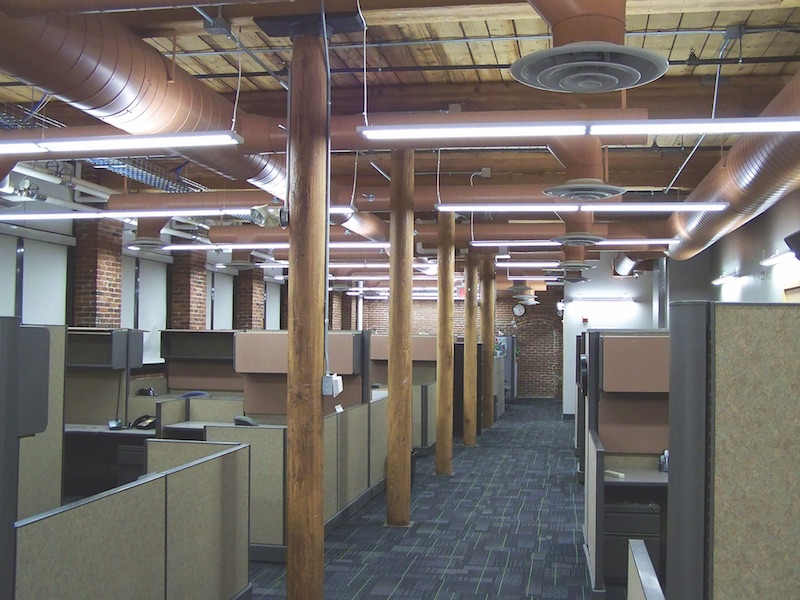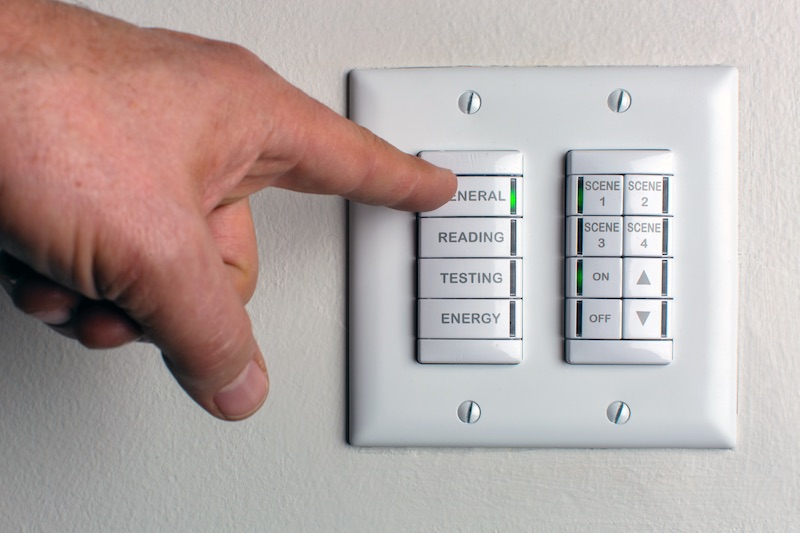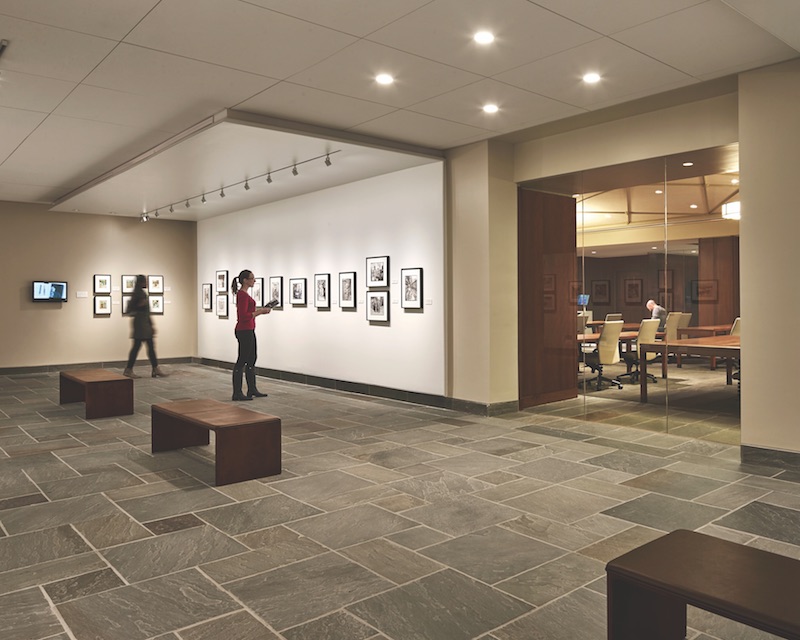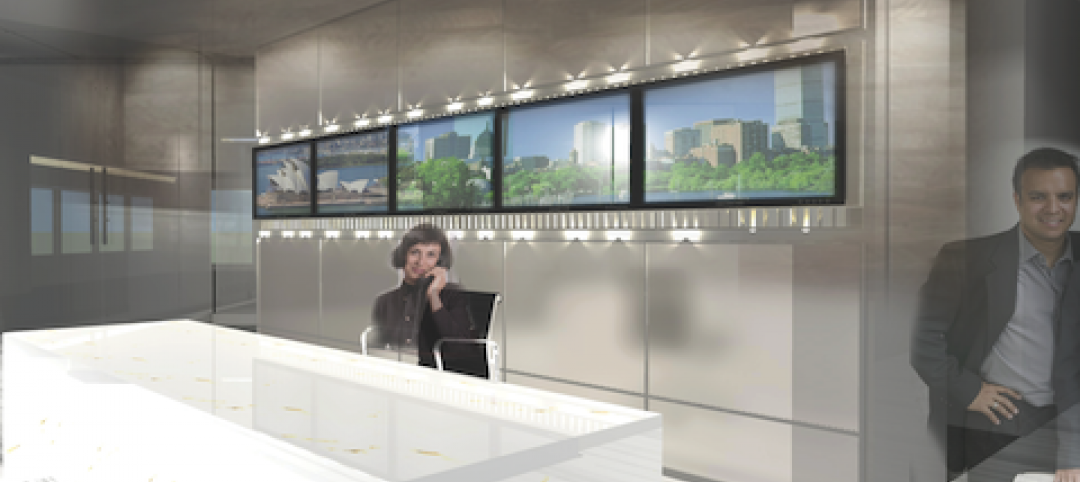On any given weekday, there’s a good chance that this reporter will open his email box and find a message touting another new LED product.
Some of these products are little more than variations on an existing theme. Others might eventually turn out to be breakthroughs. But the barrage reflects how pervasive LEDs are in the commercial building market, and how the technology continues to evolve.
“LED technology is changing every week, and it can be disorienting,” says Alex Guarco, Operations Manager for Access Fixtures, the Worcester, Mass.-based supplier. In February, Access Fixtures introduced its 407w High Output LED Sport Light, with three color temperatures and the promise that it can deliver 56,955 light source lumens.
To keep up with advancements and new offerings in the LED lighting space, AEC firms rely on trustworthy suppliers and, more selectively, lighting consultants. “We see three major lighting distributors in our offices at least once a week,” says Mark Lee, AIA, LEED AP, Associate Principal with Harriman, an Auburn, Maine-based AE and planning practice.
Like many firms, Harriman insists that suppliers provide samples so that it can conduct in-situ mockups to verify performance claims. Harriman is currently relamping a large banking center with LEDs, for which it created lighting models and then mounted and metered mockups in the building to test the lighting against the models.
Every project that CallisonRTKL works on includes LED lighting. Jules Gim, head of the firm’s lighting design studio in New York, admits that change is happening so rapidly in this category that some of the lighting systems her firm has specified recently might already be passé. She, too, says samples from lighting manufacturers are critical for assessing performance claims before her firm tries anything new.
George Sexton III, a lighting consultant in Washington, D.C., goes one step further and demands third-party documentation from manufacturers to back up their claims. This level of vetting is essential, he says, because “LEDs are all over the map” in terms of their relative quality and utility.
Sexton elaborates that a manufacturer might rate the color temperature of an LED fixture 3000 Kelvin, which is a “rough approximation” of how the lighting will look in use. “But when you’re trying to match fixture X with fixtures Y and Z, the likelihood is that the color temp is going to be different.”
The problem is a lack of standardization for such things as beam distribution, color temp, output, and compatibility of dimming systems. “It’s still the wild west out there,” Sexton says.
In this freewheeling environment, Shepley Bulfinch has been assigning a lighting consultant to many of its projects across building typologies. “I’m really glad this is happening, because lighting education for architecture doesn’t happen in the classroom,” says Joe Rondinelli, a Director in the firm’s Boston office.
Rondinelli says continuing education is easier now that LEDs have solidified their position as a single lighting source. But in 2017, his firm has been revising its training to be more focused and concentrated. This month, six lighting consultants were scheduled to participate in a roundtable discussion on lighting at the firm’s Boston office. Each expert will address a specific lighting-related topic—for example, operating rooms for healthcare projects. Rondinelli estimates that between 50 and 60 of Shepley’s employees—about one-third of the office’s total—signed up for these discussions. The goal, he says, “is to apply those sessions to the work on their boards.”
Later in April, Shepley’s Boston office is scheduled to conduct a mini trade show, for which three rep agencies have been lining up lighting vendors as exhibitors. Shepley might also conduct smaller trade shows at its Phoenix and Houston offices.
 Harriman provided the electrical engineering design for the LED lighting upgrade at Bates Mill in Lewiston, Maine. LED direct and indirect fixtures were selected to improve occupant comfort through better lighting distribution and controls in what is a challenging open office environment. Courtesy Harriman.
Harriman provided the electrical engineering design for the LED lighting upgrade at Bates Mill in Lewiston, Maine. LED direct and indirect fixtures were selected to improve occupant comfort through better lighting distribution and controls in what is a challenging open office environment. Courtesy Harriman.
Why LEDs now?
Light-emitting diodes, which were first used commercially for signal lighting, have become the go-to light source for numerous applications, including nonresidential construction. There’s really no secret to their success: LEDs are energy efficient, durable, unfazed by cold weather, environmentally friendly (they don’t contain mercury or other hazardous substances), have the potential to last more than 50,000 hours, and are controllable, in that they can be dimmed and strobed.
What had been one of LEDs’ main disadvantages—cost—has largely been addressed. And its longevity compared to incandescent, halogen, and fluorescent lighting makes LEDs a good investment, especially for spaces like retail and hotels, where the lights are on all the time.
The ability to control LEDs for different room situations contributes to their appeal. As part of a research partnership with Acuity Brands, the engineering firm Estes, McClure & Associates recently installed Acuity’s Tunable White LED lighting system with flexible controls at the Dale B. Davis Elementary School in Carrollton, Texas. That system allows color temperature to be adjusted to optimal light levels for specific classroom activities. Teachers can customize classroom lighting for every task, from reading to test taking. The system’s control pad presets include four warm and cool color temperatures, ranging from 3000 to 5000 Kelvin, the latter being similar to daylight.
When it comes to controls, though, Gim of CallisonRTKL has found that matching fixtures with compatible dimmers that have minimal loads can sometimes present wattage issues. And LED controls, she adds, “need to be super straightforward and intuitive” or clients won’t use them.
Miniaturization also gives LEDs an edge, because it allows AEC firms to incorporate this lighting into narrower spaces. “There are so many projects that 10 years ago would have been inconceivable, but are now doable because of LEDs,” says Sexton. He points specifically to a project his firm is evaluating, whose client wants to integrate lighting into a highly tooled trellis system. “This is something that only miniaturized downlighting could accomplish,” he says.
LEDs “allow you to design more with lighting,” adds Jennifer Wells, Shepley Bulfinch’s VP for Brand Strategy. What Harriman’s Lee would like to see next is miniaturized LED fixtures that blend into the architecture to the point of near invisibility.
Lee observes that even lighting “purists” in the performing arts world are shedding their objections to using LEDs. Indeed, Shepley Bulfinch recently completed the 8,000-sf Smith Learning Theater for the Gottesman Libraries at Columbia University’s Teachers College in New York. This black-box facility with flexible spaces includes a theatrical grid with programmable LEDs. “Five or six years ago, this building team would have insisted on using theatrical lights,” Rondinelli says.
Gottesman Libraries also recently exhibited an interactive installation, called Mindful Lights, which examined the uses of LEDs and mixed media to create a visual and spatial experience. Reactive lighting moved across sculptural structures, thanks to a dithering USB-controlled Fadecandy NeoPixels driver for RGB LEDs, and a sonic rangefinder that detected the installation’s viewers.
Are LEDs being overused?
The general consensus among sources contacted for this article is that LED lighting and fixture compatibility isn’t anywhere near the problem it was several years ago. And, according to Ethan Lin, Sales Manager for Delta Products’ Lighting Business Unit, the industry has coalesced around two common standards for LED products: Energy Star for bulbs, downlights, and residential luminaires; and the Design Lights Consortium for commercial and industrial lighting projects.
However, these standards keep evolving “to require better efficacy, quality of light and color fidelity, flicker, glare control, and dimmer compatibility,” says Lin.
As LEDs have become the industry’s default lighting solution, there’s also the danger that they are being overused or misused. Sexton, for one, thinks that in their rush to install LEDs everywhere, some AEC firms and their clients aren’t thinking hard enough about which lighting type might be best for a particular situation.
Access Fixtures, for instance, has in its portfolio turtle- and wildlife-friendly LEDs that don’t disorient animals’ mating rituals. But Guarco still sees hotels installing “these big, glaring wall packs that turtles mistake for the moon.”
Guarco also wishes LED data was more consistent. He believes, for example, that a “system watt” measurement is a more reliable barometer of performance. But “a lot of companies won’t even publish that on their products,” and users have to ask for it.
 The Dale B. Davis Elementary School in Carrollton, Texas, was the platform for a research partnership between the engineering firm Estes, McClure & Associates and Acuity Brands, which introduced Lithonia Lighting’s BLT Series Tunable White Luminaire System with Acuity’s Digital Light Controls to the classrooms. That system allows the light color temperature to be adjusted to optimal light levels for specific classroom activities. A single system with simple controls allows the teacher to create scenes by controlling the intensity of lights as well as dimming in selected zones.
The Dale B. Davis Elementary School in Carrollton, Texas, was the platform for a research partnership between the engineering firm Estes, McClure & Associates and Acuity Brands, which introduced Lithonia Lighting’s BLT Series Tunable White Luminaire System with Acuity’s Digital Light Controls to the classrooms. That system allows the light color temperature to be adjusted to optimal light levels for specific classroom activities. A single system with simple controls allows the teacher to create scenes by controlling the intensity of lights as well as dimming in selected zones.
Lighting as AN information platform
These concerns notwithstanding, broader use of LEDs seems unstoppable, as the lights get brighter, cheaper, and more flexible in their utility. For the 11,000-sf lobby of its new conference and event center in West Des Moines, Iowa, the retailer Hy-Vee hired Dimensional Innovations, an Overland Park, Kan.-based architecture and design firm, to install curved 360-degree LED displays—from NanoLumens’ Nixel Series—that project highlights of Hy-Vee’s 87-year history. Many of these LED displays wrap around four-foot-diameter columns.
Sexton says he’s always on the lookout for improvements in LED fidelity, output, and control. Gim says she’s eager to discover smart fixtures that can be integrated into other materials.
Lin of Delta Products says manufacturers are now rolling out LED technologies for commercial applications that include visible light communication—an illumination source that can also transmit information—and light-based indoor positioning and wayfinding systems. He notes, too, that lighting is being used as one of the main carriers of Internet of Things platforms. And it seems only a matter of time before LED wireless controls, which are already prevalent on the residential scene, find their way into commercial buildings.
Related Stories
| Jan 21, 2011
Sustainable history center exhibits Fort Ticonderoga’s storied past
Fort Ticonderoga, in Ticonderoga, N.Y., along Lake Champlain, dates to 1755 and was the site of battles in the French and Indian War and the American Revolution. The new $20.8 million, 15,000-sf Deborah Clarke Mars Education Center pays homage to the French magasin du Roi (the King’s warehouse) at the fort.
| Dec 17, 2010
New engineering building goes for net-zero energy
A new $90 million, 250,000-sf classroom and laboratory facility with a 450-seat auditorium for the College of Electrical and Computer Engineering at the University of Illinois at Urbana/Champaign is aiming for LEED Platinum.
| Nov 3, 2010
First of three green labs opens at Iowa State University
Designed by ZGF Architects, in association with OPN Architects, the Biorenewable Research Laboratory on the Ames campus of Iowa State University is the first of three projects completed as part of the school’s Biorenewables Complex. The 71,800-sf LEED Gold project is one of three wings that will make up the 210,000-sf complex.
| Nov 3, 2010
Park’s green education center a lesson in sustainability
The new Cantigny Outdoor Education Center, located within the 500-acre Cantigny Park in Wheaton, Ill., earned LEED Silver. Designed by DLA Architects, the 3,100-sf multipurpose center will serve patrons of the park’s golf courses, museums, and display garden, one of the largest such gardens in the Midwest.
| Nov 3, 2010
Senior housing will be affordable, sustainable
Horizons at Morgan Hill, a 49-unit affordable senior housing community in Morgan Hill, Calif., was designed by KTGY Group and developed by Urban Housing Communities. The $21.2 million, three-story building will offer 36 one-bed/bath units (773 sf) and 13 two-bed/bath units (1,025 sf) on a 2.6-acre site.
| Nov 3, 2010
Virginia biofuel research center moving along
The Sustainable Energy Technology Center has broken ground in October on the Danville, Va., campus of the Institute for Advanced Learning and Research. The 25,000-sf facility will be used to develop enhanced bio-based fuels, and will house research laboratories, support labs, graduate student research space, and faculty offices. Rainwater harvesting, a vegetated roof, low-VOC and recycled materials, photovoltaic panels, high-efficiency plumbing fixtures and water-saving systems, and LED light fixtures will be deployed. Dewberry served as lead architect, with Lord Aeck & Sargent serving as laboratory designer and sustainability consultant. Perigon Engineering consulted on high-bay process labs. New Atlantic Contracting is building the facility.
| Nov 2, 2010
A Look Back at the Navy’s First LEED Gold
Building Design+Construction takes a retrospective tour of a pace-setting LEED project.
| Nov 2, 2010
Wind Power, Windy City-style
Building-integrated wind turbines lend a futuristic look to a parking structure in Chicago’s trendy River North neighborhood. Only time will tell how much power the wind devices will generate.
| Oct 13, 2010
Prefab Trailblazer
The $137 million, 12-story, 500,000-sf Miami Valley Hospital cardiac center, Dayton, Ohio, is the first major hospital project in the U.S. to have made extensive use of prefabricated components in its design and construction.
| Oct 13, 2010
HQ renovations aim for modern look
Gerner Kronick + Valcarcel Architects’ renovations to the Commonwealth Bank of Australia’s New York City headquarters will feature a reworked reception lobby with back-painted glass, silk-screened logos, and a video wall.
















